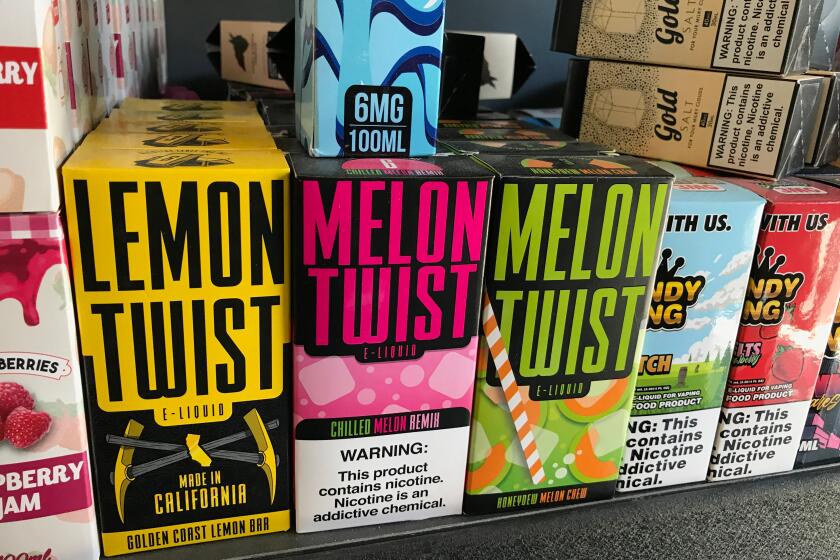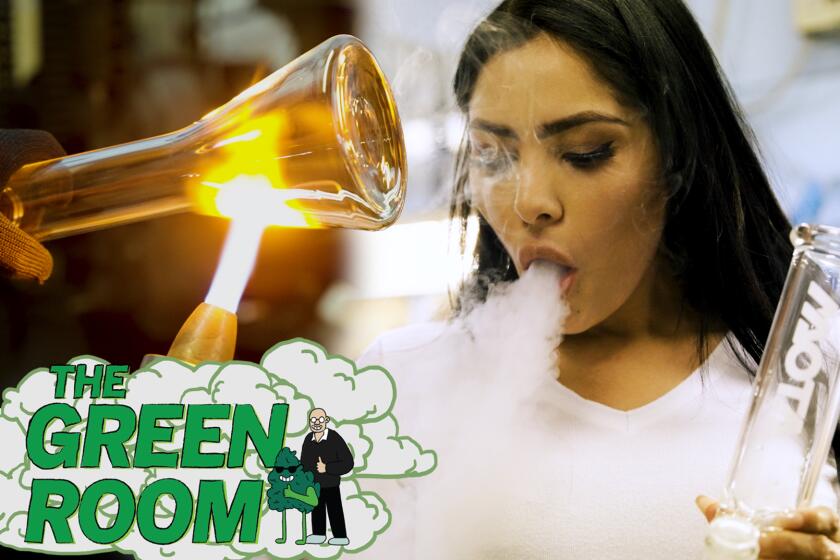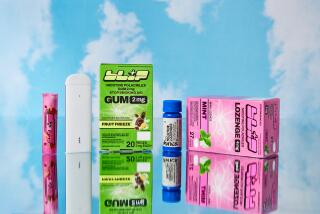FDA bans Juul e-cigarettes tied to teen vaping surge

The FDA’s order for Juul to pull its e-cigarettes from the U.S. market is part of an effort to bring scientific scrutiny to the multibillion-dollar vaping industry.
WASHINGTON — Federal health officials on Thursday ordered Juul to pull its electronic cigarettes from the U.S. market, the latest blow to the embattled company widely blamed for sparking a national surge in teen vaping.
The action is part of a sweeping effort by the Food and Drug Administration to bring scientific scrutiny to the multibillion-dollar vaping industry after years of regulatory delays.
The FDA said Juul must stop selling its vaping device and its tobacco and menthol-flavored cartridges. Those already on the market must be removed. Consumers aren’t restricted from having or using Juul’s products, the agency said.
To stay on the market, companies must show that their e-cigarettes benefit public health. In practice, that means proving that adult smokers who use them are likely to quit or reduce their smoking, while teens are unlikely to get hooked on them.
L.A. will ban many businesses from selling tobacco products that come in sweet, spicy and minty flavors under restrictions backed by the City Council.
The FDA noted that some of the biggest sellers like Juul may have played a “disproportionate″ role in the rise in teen vaping. The agency said Thursday that Juul’s application didn’t have enough evidence to show that marketing its products “would be appropriate for the protection of the public health.”
Juul said it disagrees with the FDA’s findings and will seek to put the ban on hold while the company considers its options, including a possible appeal and talking with regulators.
In a statement, the FDA said Juul’s application left regulators with significant questions and didn’t include enough information to evaluate any potential risks. The agency said the company’s research included “insufficient and conflicting data” about things like potentially harmful chemicals leaching from Juul’s cartridges.
“Without the data needed to determine relevant health risks, the FDA is issuing these marketing denial orders.” Michele Mital, acting director of the FDA’s tobacco center, said in the statement.
The agency has granted some e-cigarette applications. Since last fall, the agency has given its OK to tobacco-flavored e-cigarettes from R.J. Reynolds, Logic and other companies.
The City Council signaled interest in a proposal to permit three lounges where customers could smoke, vape or consume edibles.
But industry players and anti-tobacco advocates have complained that those products account for just a tiny share of the $6-billion vaping market in the U.S.
Regulators repeatedly delayed making decisions on devices from market leaders, including Juul, which remains the best-selling vaping brand although sales have dipped.
Last year, the agency rejected applications for more than 1 million other e-cigarettes and related products, mainly due to their potential appeal to underage teens.
The American Lung Assn. called Thursday’s decision “long overdue and most welcome” and cited Juul for stoking youth vaping.
E-cigarettes first appeared in the U.S. more than a decade ago with the promise of providing smokers a less harmful alternative. The devices heat a nicotine solution into a vapor that’s inhaled, bypassing many of the toxic chemicals produced by burning tobacco.
Los Angeles-based MOTA Glass uses a network of local artisans to craft ‘made in the U.S.A.’ water pipes.
But studies have reached conflicting conclusions about whether they truly help smokers quit. And efforts by the FDA to rule on vaping products and their claims were repeatedly slowed by industry lobbying and competing political interests.
The vaping market grew to include hundreds of companies selling an array of devices and nicotine solutions in various flavors and strengths.
The vaping issue took on new urgency in 2018, when Juul’s high-nicotine, fruity-flavored cartridges quickly became a nationwide craze among middle and high school students. The company faces a slew of federal and state investigations into its early marketing practices, which included distributing free Juul products at concerts and parties hosted by young influencers.
In 2019, the company was pressured into halting all advertising and eliminating its fruit and dessert flavors. The next year, the FDA limited flavors in small vaping devices to just tobacco and menthol. Separately, Congress raised the purchase age for all tobacco and vaping products to 21.
But the question of whether e-cigarettes should remain on the market at all remained.
The FDA has been working under a court order to render its decisions; anti-tobacco groups successfully sued the agency to speed up its review.
FDA regulators warned companies for years that they would have to submit rigorous, long-term data showing a clear benefit for smokers who switch to vaping. But all but the largest e-cigarette manufacturers have resisted conducting that kind of expensive, time-consuming research.
While Juul remains a top seller, a recent federal survey shows that teenagers have been shifting away from the company. Last year’s survey showed Juul was the fourth-most popular e-cigarette among high schoolers who regularly vape. The most popular brand was a disposable e-cigarette called Puff Bar that comes in flavors like pink lemonade, strawberry and mango. That company’s disposable e-cigarettes had been able to skirt regulation because they use synthetic nicotine, which until recently was outside the FDA’s jurisdiction. Congress recently closed that loophole.
Overall, the survey showed a drop of nearly 40% in the teen vaping rate as many kids were unable to attend school in person during the pandemic. Still, federal officials cautioned about interpreting the results, given they were collected online for the first time, instead of in classrooms.
The brainchild of two Stanford University students, Juul launched in 2015 and within two years rocketed to the top of the vaping market. Juul, which is partially owned by tobacco giant Altria, still accounts for nearly 50% of the U.S. e-cigarette market. It once controlled more than 75%.
On Tuesday, the FDA also laid out plans to establish a maximum nicotine level for certain tobacco products to reduce their addictiveness. In that announcement, the agency also noted that it has invested in a multimedia public education campaign aimed at warning young people about the potential risks of e-cigarette use.
More to Read
Sign up for Essential California
The most important California stories and recommendations in your inbox every morning.
You may occasionally receive promotional content from the Los Angeles Times.













